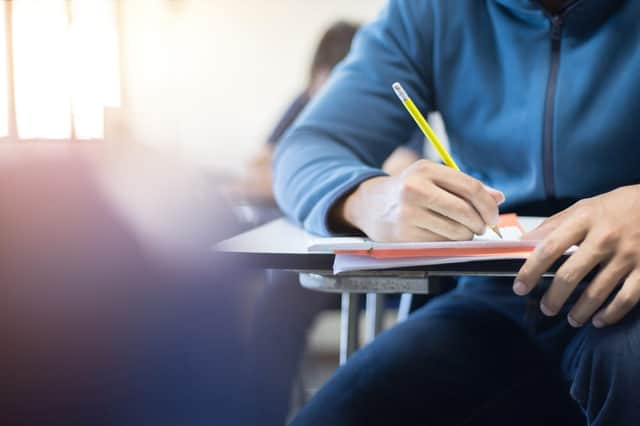Poorer school pupils in England are 18 months behind their better off classmates by the time they finish their GCSEs - according to a new report


Analysis of government data suggests that the learning gap between rich and poor students of primary school age in England has widened for the first time since 2007.
The statistics come from the Education Policy Institute (EPI), and appears to show that a shift took place before even the coronavirus pandemic began.
What does the data show?
Advertisement
Hide AdAdvertisement
Hide AdThe report from the EPI is titled Education in England: Annual Report 2020, and was published by Jo Hutchinson, Mary Reader and Avinash Akhal.
Research found that the attainment gap between disadvantaged pupils and their peers has stopped closing for the first time since 2007. The EPI states that “policymakers have not succeeded in responding to earlier reports warning of a major loss of momentum in closing the gap.”
According to the report, disadvantaged pupils are roughly 18.1 months of learning behind their non-disadvantaged peers by the time they finish their GCSE exams.
“Researchers have identified the increasing proportion of disadvantaged children in persistent poverty as a contributory cause of the lack of progress with narrowing the disadvantage gap,” the EPI says.
The effects of the pandemic
Advertisement
Hide AdAdvertisement
Hide AdWhile the widening of the gap appeared to have begun before the Covid-19 pandemic hit, the EPI says that it is widely expected that lockdown school closures will widen the gap further.
The latest data in the report is from 2019, with the EPI saying that, since then, the Covid-19 epidemic has had an huge impact on the English education system.
“Everything we have so far learned about education during the schools’ lockdown suggests that the response to the health crisis will have had a particularly adverse impact on poor and vulnerable children,” says the EPI.
The report adds, “The gaps we report here may therefore already be much wider this year.”
Advertisement
Hide AdAdvertisement
Hide AdWithout targeted government action to close the gap, there is a risk of “undoing decades of progress in tackling educational inequalities”, the EPI warns.
Areas where the gap is the widest
These are the areas in which the learning gap for disadvantaged students is the widest:
- Blackpool: 26.3 months behind
- Knowsley: 24.7 months behind
- Plymouth: 24.5 months behind
The local authorities where the gap was the smallest were all located in London:
- Westminster: 0.5 months behind
- Redbridge: 2.7 months behind
- Ealing: 4.6 months behind
- Barnet: 5.6 months behind
- Neham: 5.9 months behind
- Tower Hamlets: 5.9 months behind
- Brent: 6.9 months behind
- Kensington and Chelsea: 7.5 months behind
- Hounslow: 8.7 months behind
- Hammersmith and Fulham: 8.8 months behind
What has the Department for Education said?
The Department of Education has not directly responded to the findings of the report from the EPI, but it did say that it was determined to tackle the disruption caused to the educational system by the pandemic.
Advertisement
Hide AdAdvertisement
Hide AdIn a statement, the Department of Education commented, “Our £1bn Covid catch-up package will tackle the impact of lost teaching time, including a £650m catch-up premium to help schools support all pupils and the £350m National Tutoring Programme for disadvantaged students.
“This includes up to £9m available for the Nuffield Early Language intervention programme to support those who have missed out on early education at an essential time for their development.”